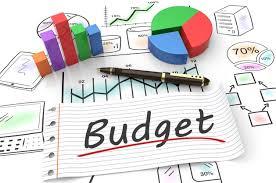Defence Budget 2008-09: An Autopsy- II
Budgetary outlays for national defence need a careful autopsy for a general understanding, which has otherwise been kept out of a national debate. This apathy must change for the very simple reason that a subject which accounts for 14 per cent of the total government expenditure and is not kept under the planned category needs to be appropriately examined. First, defence expenditure has witnessed only a modest hike this year. While Pakistan continues to increase its defence spending at a higher rate, usually four to five per cent of its GDP, China has substantially increased its spending over the past few years. This year, China has increased its defence budget to USD 58 billion, 17.5 per cent from the previous year. If one looks at India’s defence budget, in actual terms, it stands nowhere near major spenders like the US, countries in Europe, Russia and China.
Second, trends in India’s defence expenditure suggest that capital outlays have been increasing at a consistent pace in the past few years. This is attributable to two primary reasons – military hardware acquisition for replenishment purposes and current and future needs in keeping with India’s ongoing military modernization drive. An in-depth examination will, however, point to the fact that while the bulk of the resources have actually been allocated for the former, very little is being devoted toward the latter. It is generally well known that about 80 percent of the capital outlays are spent on committed liabilities.
Third, increase in capital expenditure itself may not answer all problems associated with military modernization drive. The problem in fact emanates from other sources. The demand coming from the armed forces through long, medium and annual planning is normally put under the ‘demand for grants’, which then is further trimmed by the finance ministry. It is interesting to note that in the last five years, the gap between demand and eventual outlays has hovered from as high as 27 percent to about 6 percent. Even when the allocations for capital outlays finally come for utilization during a particular year, it is generally noticed that not all money is spent in the same year, leading to what is popularly known as ‘unspent’ syndrome. The revised capital expenditure in 2007-08 is Rs. 37,000 crores as against estimated allocation of Rs 41,900 crores! The unspent syndrome is attributable to several factors ranging from ad-hoc planning, bureaucratic hurdles within civil MoD, to pruning machinery in the Ministry of Finance. But more importantly, the scrapping of a couple of major procurement deals recently (Eurocopter and the artillery guns) has not only impacted negatively on the ongoing modernization drive but has been responsible for the continuation of the ‘unspent’ syndrome.
Fourth, the gap between revenue and capital expenditure is decreasing, although slower than expected. A further rationalization effort could translate this trend into a force transformation scenario in the future, as the modernization process would eventually necessitate a capability-based approach toward force structure (which needs to be pruned) with more thrust on equipment than manpower. However, the rising capital expenditure is devoted more toward asset build-up while the revenue expenditure is still higher. The latter needs further shredding.
Fifth, the R&D base of India’s military modernization drive seems to be receiving some attention with a raised outlay for DRDO. This should have been realized long back. The R&D and production capabilities constitute the core of military modernization, which must get a top priority in any country’s national efforts. Look at the US. While its R&D budget is more than USD 80 billion in current times, in turn accounting for more than 80 percent of the global expenditure on R&D, its priority has not seen any downside trend even during the 1990s when all indicators of military efforts had witnessed drastic reductions. In this context, a substantial raise in DRDO’s budget is a welcome step. However, it must be raised further to meet the growing challenges of fast-paced technological advancements in the field of the military.
And last but not the least, the defence budget has been carefully structured to not to arouse criticism from the advocates of ‘defence versus development’. It has hovered between 2.1 to 2.4 per cent of the GDP and constitutes about 14-15 per cent of the total central government expenditure for the past five years – a consistency which must be maintained in the future. Defence being a national priority, one would have expected a hike of about 15 per cent, taking into account the sheer military acquisition necessities for modernization purposes. Unfortunately, this has not happened. It has witnessed a very modest hike amid great expectations. But then, even a modest hike, if used prudently, can translate moderate outlays into a real-term increase in defence capability.
